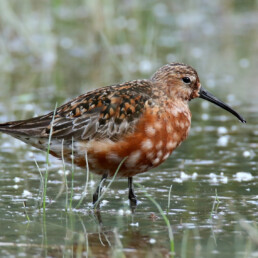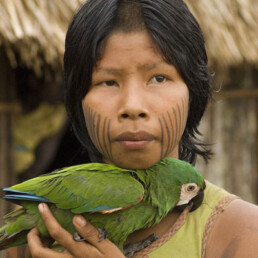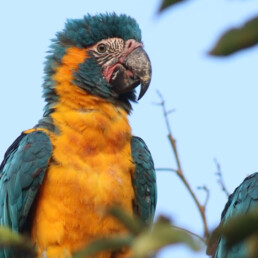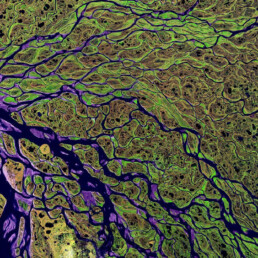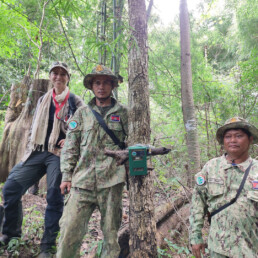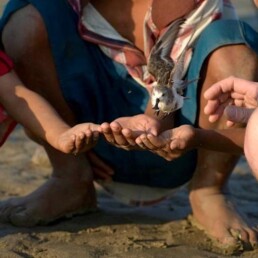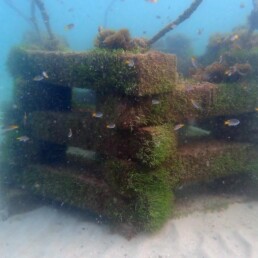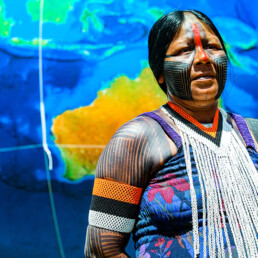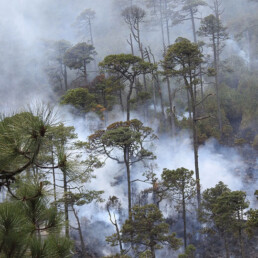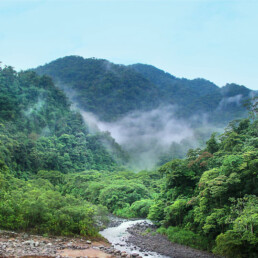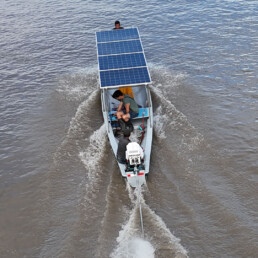The International Conservation Fund partners with Indigenous peoples and local organizations to safeguard biodiversity hotspots worldwide. By supporting their stewardship, we help protect unique species and ecosystems while sustaining the cultural knowledge, traditions, and livelihoods that are inseparable from these landscapes.
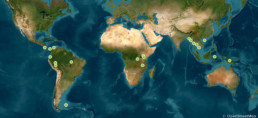
Americas
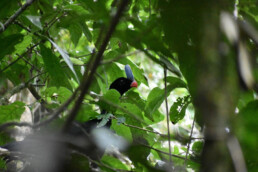
Bolivia
Asociación Armonía is working to protect the The Critically Endangered and endemic Horned Curassow with the help of the Yuracaré People. This species is found within the TIPNIS, Carrasco and Amboró National Park though its habitat is heavily affected by illegal coca agriculture and human invasion.
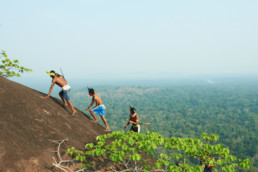
Brazil
ICF supports three Kayapo NGOs—the Protected Forest Association, Kabu Institute, and Raoni Institute. They represent communities in the northeast, northwest, and southwest sectors of Kayapo territory, defending more that 9 millions hectares of pristine rainforest.
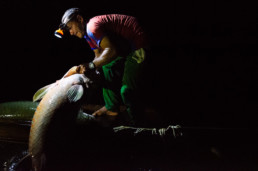
Brazil
Instituto Juruá is a Brazilian non-profit organization formed by conservationists, researchers and local environmental leaders in close partnership with rural communities and local associations. Their mission is to combine cutting-edge scientific research and traditional local knowledge to support positive initiatives for the use and management of natural resources across the Amazon, in order to promote biodiversity conservation, food security, health and income for indigenous and non-indigenous people.
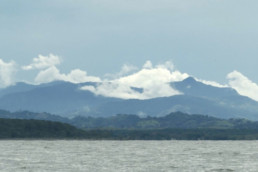
Costa Rica
The Osa Peninsula contains the largest mesic rainforest remaining on the Pacific slope of Central America, largely within Corcovado National Park. It has the largest expanse of mangrove wetlands on the Pacific slope of Central America and a unique coastal marine ecosystem—the Golfo Dulce tropical fjord. The Osa is estimated to house 2.5% of the world’s biodiversity while covering less than 0.001% of its total surface area, and was described by National Geographic in 2016 as “the most biological intense place on earth”.
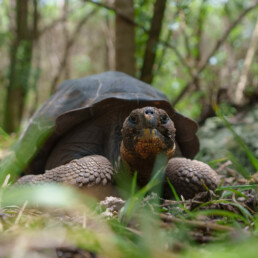
Ecuador
The Jocotoco Conservation Foundation employs a multifaceted approach to restore Floreana’s biodiversity by eliminating invasive predators and reintroducing iconic endemic species. This helps to restore harmony and equilibrium to the ecosystem.
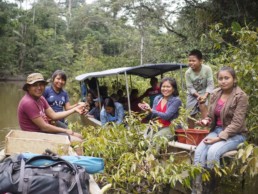
Ecuador
YAKUM works to protect indigenous forest and build cultural, medicinal and food sovereignty, through reforestation with carefully selected native tree species and territory mapping. In the Shuar language, YAKUM means “Howler Monkey”, the species with the loudest call in the animal kingdom – the call to action.

Panama
The NGO Native Future and local Wounaan communities are working to protect their traditional lands from the Majé Mountains to Panama Bay. A successful strategy led by the Wounaan has been a game- changer: it combines live satellite monitoring, border monitors, drone operators, and legal representation.
Peru
Solar canoes provide clean, affordable transportation for remote Indigenous communities in the Amazon. By replacing gasoline engines with sunlight, they cut pollution and reduce dependence on costly, hard-to-access fuel. In Sabaloyacu, this project is helping the community protect its forest, strengthen local autonomy, and build a sustainable future on the river.
Asia
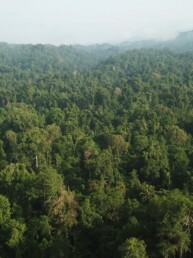
Indonesia
YANI’s mission is to preserve the unique biodiversity of Sulawesi, focusing on the Nantu Rainforest, for future generations of both Indonesian and global citizens. Nantu supports crucial populations of Sulawesi’s remarkable biodiversity on an international scale. This includes species like the Lowland and Mountain Anoas, Babirusa, Heck’s Macaque, Jatna’s Tarsier, and a rich avian diversity of over 100 species, more than 35 of which are endemic.
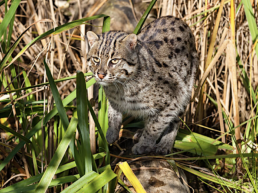
Cambodia
Our field partner the Fishing Cat Ecological Enterprise has the ambitious goal of restoring the habitat of the threatened Fishing Cat and in doing so protecting and reviving Cambodia’s mangroves for communities, biodiversity and climate adaptation.

Cambodia
Marine Conservation Cambodia (MCC), a non-profit organization dedicated to advancing marine conservation and community livelihoods, is working to rehabilitate severely damaged marine ecosystems. In close partnership with the Cambodian Fisheries Administration, MCC is protecting key seagrass beds, coral reefs, and fish populations by deploying simple structures that prevent illegal trawling.
Vietnam
The Center for Technology and Nature Conservation is leading the study and protection of endangered primates and has recently discovered previously unknown new groups of these primates.
Vietnam
The Center for Technology and Nature Conservation is protecting the critically endangered Cuora picturata and other rare turtles in the forests of Khanh Hoa and Phu Yen, Vietnam.
North America
Canada
ICF partners with the Canadian Whale Institute to protect one of the planet’s most endangered species — the North Atlantic right whale. With fewer than 350 remaining, every whale matters. Together, we combine science, field expertise, and advocacy to prevent ship strikes and fishing gear entanglements.
Africa

Kenya
Assist Mukutan Conservancy in preserving a secure sanctuary as a breeding ground for hundreds of elephants and creating a corridor for their safe passage to other protected areas.
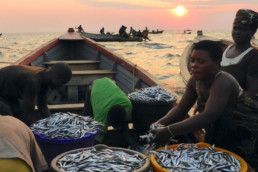
Malawi
Ripple Africa, a charitable organization registered in both the UK and the USA, is dedicated to enhancing the environment and advancing local education in Malawi, Africa. Their aim is to empower communities to safeguard the endangered and economically significant fish species in Lake Malawi through the establishment of Fish Conservation Committees.
Shorebirds
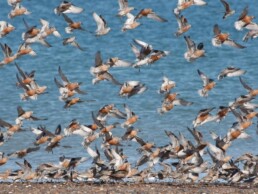
Mexico, Chile, Bolivia, Argentina
Our goal is to protect critical habitats for vulnerable shorebirds across South America. In Chile, Fundación Conservación Marina safeguards the 25,000-acre Maullín wetlands, vital for migratory species like the Hudsonian Godwit. In Bolivia, Asociación Armonía manages the Barba Azul Nature Reserve to conserve high-quality grasslands for Buff-breasted Sandpipers during their southbound migration. And in southern Patagonia, efforts focus on reversing the decline of the Magellanic Plover, threatened by habitat loss from sheep farming, cattle trampling, dogs, and off-road vehicles.
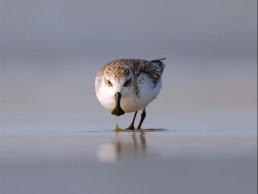
Four countries
The Spoon-billed Sandpiper, classified as Critically Endangered, breeds in Russia and migrates to Southeast Asia during winter, with only 100 known breeding pairs worldwide. Currently, 80 percent of the known population of Spoon-billed Sandpipers spend their winters in Myanmar, Bangladesh, China, and Thailand.

